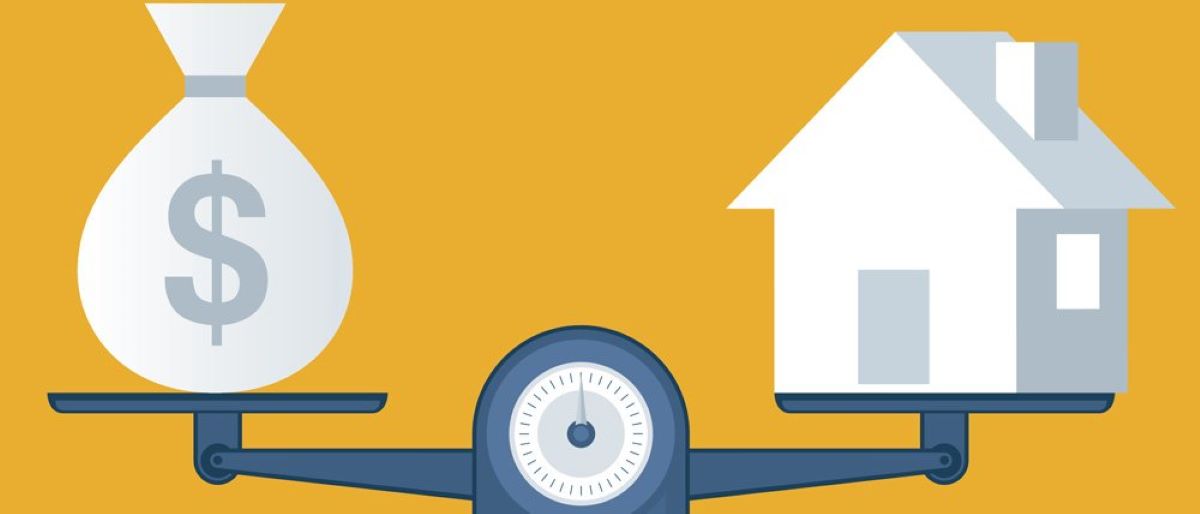

Finance
What Can Lower Property Insurance Premiums?
Published: January 22, 2024
Lower your property insurance premiums with these finance tips. Discover how to save money on insurance costs and protect your investment.
(Many of the links in this article redirect to a specific reviewed product. Your purchase of these products through affiliate links helps to generate commission for LiveWell, at no extra cost. Learn more)
Table of Contents
Introduction
Property insurance is a crucial aspect of homeownership, providing financial protection against unforeseen events that could damage or destroy your property. While insurance premiums are influenced by various factors such as location, property value, and coverage limits, there are proactive steps homeowners can take to potentially lower their property insurance premiums. By implementing certain measures and making informed decisions, homeowners can not only enhance the safety and resilience of their properties but also potentially reduce the cost of insuring them.
In this comprehensive guide, we will explore several effective strategies that can contribute to lowering property insurance premiums. From investing in home security systems to maintaining the structural integrity of the property, each strategy offers a unique opportunity to mitigate risks and potentially qualify for more favorable insurance rates. By understanding the impact of these strategies on insurance premiums, homeowners can make informed choices to protect their properties and finances effectively.
It's important to note that while these strategies can potentially lead to lower insurance premiums, the extent of the impact may vary based on individual circumstances and insurance providers. However, by proactively addressing key factors that influence insurance premiums, homeowners can take meaningful steps towards safeguarding their properties and financial well-being. Let's delve into these strategies and explore how they can contribute to lowering property insurance premiums while enhancing overall property safety and security.
Home Security Systems
Investing in a comprehensive home security system is not only a proactive measure to safeguard your property and loved ones but can also potentially lead to lower property insurance premiums. Modern home security systems encompass a range of features, including surveillance cameras, motion sensors, entryway alarms, and 24/7 monitoring services. By installing a robust security system, homeowners demonstrate a commitment to mitigating security risks, which insurance providers often view favorably.
Insurance companies recognize the deterrent effect of home security systems on potential burglaries and intrusions, which can ultimately reduce the likelihood of property damage and theft-related insurance claims. As a result, many insurance providers offer discounted premiums to homeowners with certified and professionally monitored security systems in place. Additionally, some security system providers offer insurance certificates that homeowners can present to their insurance companies to qualify for premium discounts.
When considering a home security system, it’s essential to opt for one that aligns with your property’s specific security needs and integrates seamlessly with your lifestyle. Whether you choose a system with smart home capabilities or one tailored to provide comprehensive outdoor surveillance, the goal is to enhance the overall security posture of your property while potentially lowering insurance costs.
Furthermore, in addition to the potential insurance premium savings, the peace of mind that comes with knowing your property is well-protected can be invaluable. In the event of a break-in or security breach, the swift response facilitated by a monitored security system can mitigate potential damages and losses, underscoring the proactive and protective role of these systems.
By investing in a home security system, homeowners not only bolster the security of their properties but also position themselves to potentially qualify for lower property insurance premiums. The combination of enhanced property security, potential insurance savings, and invaluable peace of mind underscores the significant benefits of integrating a robust home security system into your property management strategy.
Fire and Smoke Alarms
Fire and smoke alarms are indispensable components of a property’s safety infrastructure, serving as early warning systems that can save lives and prevent extensive property damage. Beyond their critical role in alerting occupants to potential fire hazards, these alarms can also have a positive impact on property insurance premiums.
Insurance providers place considerable emphasis on fire prevention and mitigation measures, and the presence of functional fire and smoke alarms is a key factor in their risk assessment process. Homes equipped with interconnected smoke alarms, which promptly detect smoke in multiple areas and alert occupants throughout the property, are often viewed more favorably by insurance companies. Additionally, homes with professionally monitored fire alarm systems may be eligible for insurance premium discounts, as these systems can facilitate rapid emergency response in the event of a fire.
Regular maintenance and testing of fire and smoke alarms are essential to ensure their reliable functionality. Insurance providers may inquire about the presence and maintenance of these alarms when determining coverage and premiums, emphasizing the significance of proactive alarm upkeep. By demonstrating a commitment to fire safety through the installation and maintenance of high-quality fire and smoke alarms, homeowners can potentially qualify for reduced insurance premiums while enhancing the safety and resilience of their properties.
Moreover, the proactive approach to fire safety represented by well-maintained fire and smoke alarms aligns with insurance providers’ risk management objectives, potentially resulting in lower premiums. In the unfortunate event of a fire-related incident, functional fire and smoke alarms can facilitate early detection and swift response, minimizing potential damages and injuries. This underscores the pivotal role of these alarms in not only reducing insurance premiums but also safeguarding lives and property.
Ultimately, the installation and maintenance of fire and smoke alarms offer a dual benefit: bolstering the safety of the property and potentially leading to lower insurance premiums. By prioritizing fire safety measures and integrating reliable alarm systems, homeowners can proactively mitigate risks, satisfy insurance requirements, and create a safer living environment for their families.
Roof Maintenance
The condition of a property’s roof is a critical factor in determining insurance premiums and coverage eligibility. A well-maintained roof not only enhances the overall structural integrity of the property but also reduces the likelihood of weather-related damages, ultimately influencing insurance considerations.
Insurance providers assess the age, material, and condition of a property’s roof when determining coverage and premiums. A newer roof constructed with durable, impact-resistant materials may qualify for lower insurance premiums due to its reduced susceptibility to weather-related damage. Additionally, regular roof inspections and maintenance, including addressing any signs of wear, damage, or deterioration, can contribute to favorable insurance evaluations.
Homeowners who invest in professional roof maintenance and promptly address any identified issues demonstrate a proactive approach to property upkeep, which can positively impact insurance considerations. By mitigating the risk of roof-related damages through preventive maintenance, homeowners may reduce the likelihood of filing insurance claims, thereby potentially qualifying for lower premiums.
Furthermore, in regions prone to severe weather events such as hurricanes or hailstorms, the installation of impact-resistant roofing materials and the reinforcement of roof structures can lead to insurance premium discounts. These proactive measures reflect a commitment to fortifying the property against weather-related risks, aligning with insurance providers’ risk mitigation objectives.
It’s important to note that insurance providers may require documentation of roof inspections, repairs, or upgrades to substantiate eligibility for premium discounts. By maintaining thorough records of roof maintenance and improvements, homeowners can provide insurers with the necessary evidence to support potential premium reductions.
Ultimately, prioritizing the maintenance and resilience of the property’s roof not only enhances its longevity and performance but also has the potential to lower insurance premiums. By proactively addressing roof-related risks and demonstrating a commitment to ongoing maintenance, homeowners can align with insurance providers’ risk management principles while safeguarding their properties and financial well-being.
Weatherproofing
Weatherproofing measures play a pivotal role in fortifying properties against the impact of adverse weather conditions, and they can also have a positive influence on property insurance premiums. By implementing weatherproofing strategies, homeowners can mitigate weather-related risks and potentially qualify for lower insurance costs.
One fundamental aspect of weatherproofing is ensuring the integrity of doors, windows, and other openings to prevent water infiltration and wind damage. Insurance providers recognize the importance of these measures in reducing the likelihood of weather-related property damage and may offer premium discounts to homeowners who have implemented effective weatherproofing solutions.
Additionally, in regions prone to hurricanes or high winds, the installation of impact-resistant windows and doors can lead to insurance premium reductions. These reinforced openings enhance the property’s resilience against windborne debris and extreme weather, aligning with insurance providers’ risk mitigation objectives and potentially resulting in lower premiums.
Furthermore, the implementation of measures such as roof reinforcement, the installation of storm shutters, and the elevation of electrical systems in flood-prone areas can contribute to favorable insurance evaluations. By proactively addressing weather-related risks through these enhancements, homeowners demonstrate a commitment to fortifying their properties against potential damages, which insurance providers often view positively.
Regular maintenance of weatherproofing components is essential to ensure their ongoing effectiveness. Insurance companies may inquire about the upkeep and condition of weatherproofing installations when assessing coverage and premiums, emphasizing the importance of proactive maintenance in maintaining eligibility for potential premium discounts.
By integrating comprehensive weatherproofing measures tailored to the property’s specific vulnerabilities, homeowners can not only enhance their property’s resilience against adverse weather but also position themselves to potentially qualify for lower insurance premiums. The combination of reduced weather-related risks, potential insurance savings, and enhanced property protection underscores the significant benefits of proactive weatherproofing strategies.
Location and Crime Rates
The location of a property and the prevailing crime rates in the area are significant factors that influence property insurance premiums. Insurance providers consider the geographic location of a property and the associated crime risks when assessing coverage and determining insurance costs. Understanding the impact of location and crime rates on insurance premiums can empower homeowners to make informed decisions to potentially lower their insurance expenses.
Properties situated in areas with lower crime rates typically benefit from reduced insurance premiums, as they are perceived as posing lower security risks. Conversely, properties located in areas with higher crime rates may experience higher insurance costs due to the increased likelihood of theft, vandalism, and property-related crimes.
When evaluating insurance premiums, providers also consider the proximity of a property to fire stations, hydrants, and other emergency services. Homes located in close proximity to these essential services may qualify for lower insurance premiums due to the enhanced emergency response capabilities, which can mitigate potential damages in the event of a fire or other emergencies.
Moreover, properties located in regions prone to natural disasters, such as coastal areas susceptible to hurricanes or regions with a high risk of wildfires, may experience higher insurance premiums due to the elevated exposure to weather-related risks. Conversely, homes situated in areas with lower susceptibility to natural disasters may qualify for more favorable insurance rates.
While homeowners may not be able to relocate their properties to areas with lower crime rates or decreased exposure to natural disasters, understanding the impact of location on insurance premiums can prompt them to explore additional risk mitigation measures. Implementing security enhancements, such as home security systems and reinforced entry points, can help mitigate the impact of higher crime rates on insurance costs. Similarly, investing in weatherproofing measures and adhering to local building codes can bolster a property’s resilience against natural disasters, potentially leading to lower insurance premiums.
By recognizing the influence of location and crime rates on insurance premiums, homeowners can take proactive steps to mitigate associated risks and potentially qualify for lower insurance costs. Whether through targeted security enhancements, weatherproofing measures, or adherence to local safety regulations, homeowners can align with insurance providers’ risk management principles and enhance the overall safety and resilience of their properties.
Bundling Policies
Bundling insurance policies, such as combining homeowners’ insurance with auto or life insurance, can offer homeowners a strategic opportunity to potentially lower their overall insurance costs. Insurance providers often incentivize policy bundling by offering discounts and reduced premiums to policyholders who consolidate multiple insurance products with the same company.
By bundling policies, homeowners can not only streamline their insurance management but also unlock cost-saving benefits. Insurance companies typically offer discounts on individual policies when they are bundled together, resulting in overall cost savings for the policyholder. This approach not only simplifies the insurance process but also presents an opportunity to secure more comprehensive coverage at a reduced cost.
Furthermore, bundling policies can enhance the overall value of insurance coverage, as it often enables homeowners to access additional features and benefits. For example, when bundling homeowners’ and auto insurance, policyholders may gain access to combined deductibles, enhanced liability coverage, or additional perks such as roadside assistance. This integrated approach to insurance can result in a more robust and cost-effective risk management strategy.
When considering policy bundling, homeowners should evaluate the coverage options, discounts, and overall suitability of the bundled policies. It’s essential to assess the combined coverage to ensure that it meets specific needs and provides comprehensive protection across different facets of homeownership, such as property, vehicles, and personal assets.
Additionally, homeowners should periodically review their bundled policies to ensure that they align with their evolving needs and circumstances. Life events, such as purchasing a new vehicle or expanding the property, may necessitate adjustments to the bundled insurance coverage to maintain optimal protection and cost efficiency.
By leveraging the benefits of policy bundling, homeowners can potentially lower their insurance costs while benefiting from consolidated coverage and streamlined insurance management. The opportunity to access discounts, enhance overall coverage, and simplify insurance administration underscores the strategic advantages of bundling policies with a single, trusted insurance provider.
Deductible Adjustment
Adjusting the deductible on a homeowners’ insurance policy can be a strategic approach to potentially lower insurance premiums while maintaining comprehensive coverage. The deductible represents the amount a homeowner is responsible for paying out of pocket before the insurance coverage takes effect in the event of a claim. By understanding the impact of deductible adjustments, homeowners can make informed decisions to optimize their insurance costs without compromising essential coverage.
Increasing the deductible amount typically leads to lower insurance premiums. A higher deductible means that the homeowner assumes more financial responsibility in the event of a claim, which can result in reduced insurance costs. However, it’s crucial to carefully assess the financial implications of a higher deductible and ensure that it aligns with the homeowner’s risk tolerance and ability to cover the increased out-of-pocket expenses in the event of a claim.
Conversely, lowering the deductible may lead to higher insurance premiums, as the insurance provider assumes a greater portion of the potential claim costs. While a lower deductible reduces the immediate financial burden on the homeowner in the event of a claim, it may result in higher ongoing insurance costs. Homeowners should weigh the trade-offs between lower out-of-pocket expenses and potentially higher premiums when considering deductible adjustments.
When evaluating deductible adjustments, homeowners should consider their financial capacity to cover the chosen deductible amount in the event of a claim. It’s essential to strike a balance between potentially lower premiums and the ability to comfortably meet the deductible if a claim arises, ensuring that the chosen deductible aligns with the homeowner’s financial security and risk management objectives.
Moreover, periodic reassessment of the deductible amount in light of changing financial circumstances, property values, and insurance costs is advisable. Life events such as home renovations, property upgrades, or changes in property values may warrant a review of the deductible to ensure that it remains aligned with the homeowner’s evolving needs and financial capacity.
By understanding the implications of deductible adjustments and carefully evaluating the trade-offs between out-of-pocket expenses and insurance premiums, homeowners can make informed decisions to potentially lower their insurance costs while maintaining appropriate coverage. The strategic approach to deductible management enables homeowners to optimize their insurance expenses in a manner that reflects their risk tolerance, financial capacity, and evolving homeownership needs.
Claim History
Homeowners’ insurance premiums can be significantly influenced by the property’s claim history, as insurance providers consider the frequency and nature of previous claims when assessing risk and determining coverage costs. Understanding the impact of claim history on insurance premiums empowers homeowners to proactively manage their insurance costs while maintaining comprehensive coverage.
A history of frequent or severe insurance claims, such as those related to property damage, theft, or liability issues, can lead to higher insurance premiums. Insurance providers may perceive properties with a substantial claim history as posing a higher risk, resulting in increased premium costs to mitigate potential future claim expenses.
Conversely, properties with a minimal or favorable claim history may qualify for lower insurance premiums. Homeowners who have not filed significant claims or have a history of responsible property management demonstrate a lower perceived risk, which can translate into more favorable insurance rates.
When evaluating insurance premiums in relation to claim history, homeowners should consider the long-term financial implications of filing minor claims. While insurance coverage is designed to provide financial protection in the event of significant losses, the frequency of small claims can impact insurance costs over time. Homeowners may opt to handle minor repairs and incidents independently to avoid potential premium increases resulting from claim filings.
Furthermore, homeowners should maintain open communication with their insurance providers regarding claim history and its potential impact on premiums. Understanding how previous claims influence current and future insurance costs can help homeowners make informed decisions regarding their risk management and insurance needs.
Periodic review of the property’s claim history and its implications for insurance premiums is advisable, especially in light of evolving property management practices and risk mitigation strategies. By proactively managing claim history and its impact on insurance costs, homeowners can optimize their coverage while potentially qualifying for more favorable premium rates.
Ultimately, the property’s claim history plays a significant role in determining insurance premiums, and homeowners can leverage this understanding to make informed decisions about managing their insurance costs. By maintaining a responsible approach to property management and risk mitigation, homeowners can potentially qualify for lower insurance premiums while ensuring comprehensive coverage for their properties.
Credit Score
Homeowners’ credit scores play a crucial role in determining insurance premiums, as insurance providers often consider credit history when assessing the risk profile of policyholders. Understanding the impact of credit scores on insurance premiums empowers homeowners to proactively manage their credit and potentially lower their insurance costs.
A strong credit score is generally associated with lower insurance premiums, as it reflects a history of responsible financial management and may indicate a lower perceived risk to insurance providers. Homeowners with higher credit scores are often viewed as less likely to file insurance claims, leading to potentially reduced insurance costs.
Conversely, lower credit scores may result in higher insurance premiums, as they can be perceived as indicative of a higher risk profile. Insurance providers may adjust premiums based on credit scores, reflecting the potential impact of credit history on future claim activity and associated costs.
When evaluating the relationship between credit scores and insurance premiums, homeowners should prioritize maintaining and improving their credit scores through responsible financial practices. Timely bill payments, prudent credit utilization, and regular credit monitoring can contribute to a positive credit history, potentially leading to more favorable insurance rates.
Periodic review of credit reports and scores is advisable, as it allows homeowners to identify and address any inaccuracies or areas for improvement. By actively managing their credit, homeowners can potentially qualify for lower insurance premiums and ensure that their credit history aligns with their overall financial goals.
Moreover, homeowners should maintain open communication with their insurance providers regarding the potential impact of credit scores on insurance premiums. Understanding how credit history influences insurance costs can help homeowners make informed decisions about managing their credit and insurance needs.
By proactively managing their credit scores and understanding the correlation between credit history and insurance premiums, homeowners can optimize their insurance costs while maintaining comprehensive coverage for their properties. The strategic approach to credit management can lead to potentially lower insurance premiums and reflects a commitment to responsible financial stewardship.
Conclusion
Property insurance premiums are influenced by a multitude of factors, and homeowners have the opportunity to proactively manage these considerations to potentially lower their insurance costs while maintaining comprehensive coverage. By understanding the impact of various strategies and factors on insurance premiums, homeowners can make informed decisions to protect their properties and financial well-being effectively.
From investing in home security systems and implementing weatherproofing measures to maintaining a favorable claim history and managing credit scores, homeowners can leverage a range of strategies to potentially qualify for lower insurance premiums. These proactive measures not only contribute to cost savings but also enhance the safety, resilience, and overall value of the insured properties.
Furthermore, factors such as location, crime rates, and the property’s claim history play pivotal roles in shaping insurance premiums. By recognizing the influence of these factors, homeowners can take strategic steps to mitigate associated risks and potentially qualify for more favorable insurance rates.
Policy bundling and deductible adjustments present additional opportunities for homeowners to optimize their insurance costs while benefiting from consolidated coverage and streamlined insurance management. Understanding the impact of these strategies empowers homeowners to make informed decisions that align with their risk management objectives and financial goals.
Ultimately, the comprehensive understanding of the factors influencing property insurance premiums enables homeowners to navigate the insurance landscape with confidence and foresight. By implementing proactive measures, maintaining open communication with insurance providers, and periodically reviewing their insurance needs, homeowners can optimize their insurance costs while safeguarding their properties and financial security.
By embracing a holistic approach to property insurance, homeowners can not only potentially lower their insurance premiums but also create safer, more resilient living environments for themselves and their families. The strategic integration of these measures underscores a commitment to proactive property management and responsible risk mitigation, reflecting a dedication to protecting what matters most.














